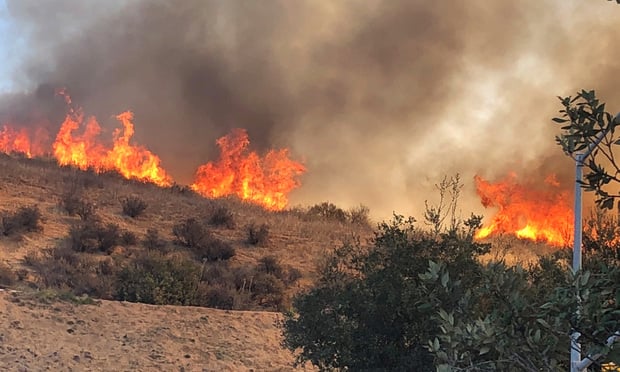The 2007 Atlantic hurricane season should be another active one, said government weather experts, with up to five major hurricanes predicted and a total of 10 hurricanes possible.
The National Oceanic & Atmospheric Administration (NOAA) released its prediction for this year's hurricane season, saying there could be between 13 and 17 named storms including those reaching hurricane strength.
NOAA Climate Prediction Center went on to say the forecast calls for seven to 10 hurricanes and between three and five major hurricanes. A major hurricane is defined as a Category 3 storm or higher on the Saffir/Simpson scale with winds of at least 111 mph.
The forecasters said there is a 75 percent chance the season will be above normal, adding that the ongoing active year remains strong. An average hurricane season is 11 named storms with six becoming hurricanes, with two major hurricanes.
The hurricane season runs from June 1 through Nov. 30.
NOAA noted that an unexpected El Ni?o effect with high ocean temperatures last year caused predictions to be too high and storms that did develop were kept offshore.
In a statement, Gary Bell, lead seasonal hurricane forecaster at NOAA Climate Prediction Center, said this year there is great uncertainty about the possible formation of unusually cool ocean temperatures in the Equatorial Pacific, called La Ni?a.
If a La Ni?a forms, then storm activity would be in the upper end of the predicted range, he noted.
He added that Subtropical Storm Andrea, which appeared off the coast of Georgia and Florida earlier this month, was not a predictor of the season ahead.
“With or without Andrea, NOAA's forecast is for an above-normal season,” he observed.
Tom Stone, manager of insurance and actuarial advisory services with the New York-based consulting firm Ernst & Young, said insurers would not be too surprised by the numbers.
“Most insurers' and reinsurers' thinking has adjusted to higher storm activity,” he said.
The numbers may cause some carriers to examine the risks on their books more closely and ask if their capacity is allocated comfortably. That action, he added, could have a stabilizing effect in a soft market.
One unfortunate reality of scientific knowledge at the moment is the inability to predict El Ni?o and La Ni?a events, Mr. Stone said. If technology could predict these events far enough in advance, insurers could better allocate capacity. As it stands now, by the time scientists learn of these events renewal season is past, he added.
Last month, two other forecasters revised their numbers upward.
William Gray and Phil Klotzbach at Colorado State University's Tropical Meteorological Project called for a total of 17 named storms with a 74 percent chance of a major hurricane hitting the U.S. coastline.
Tropical Storm Risk, part of the Benfield Hazard Research Center at University College in London, has forecast the total number of storms reaching landfall on the U.S. East Coast at five, with 10 tropical storms, nine hurricanes, and four intense storms.
This article originally appeared in The National Underwriter P&C. For the complete article, please click here.
Interested in more catastrophe news and in-depth articles? Head over to Claims' catastrophe channel for more information.
Want to continue reading?
Become a Free PropertyCasualty360 Digital Reader
Your access to unlimited PropertyCasualty360 content isn’t changing.
Once you are an ALM digital member, you’ll receive:
- Breaking insurance news and analysis, on-site and via our newsletters and custom alerts
- Weekly Insurance Speak podcast featuring exclusive interviews with industry leaders
- Educational webcasts, white papers, and ebooks from industry thought leaders
- Critical converage of the employee benefits and financial advisory markets on our other ALM sites, BenefitsPRO and ThinkAdvisor
Already have an account? Sign In Now
© 2025 ALM Global, LLC, All Rights Reserved. Request academic re-use from www.copyright.com. All other uses, submit a request to [email protected]. For more information visit Asset & Logo Licensing.








